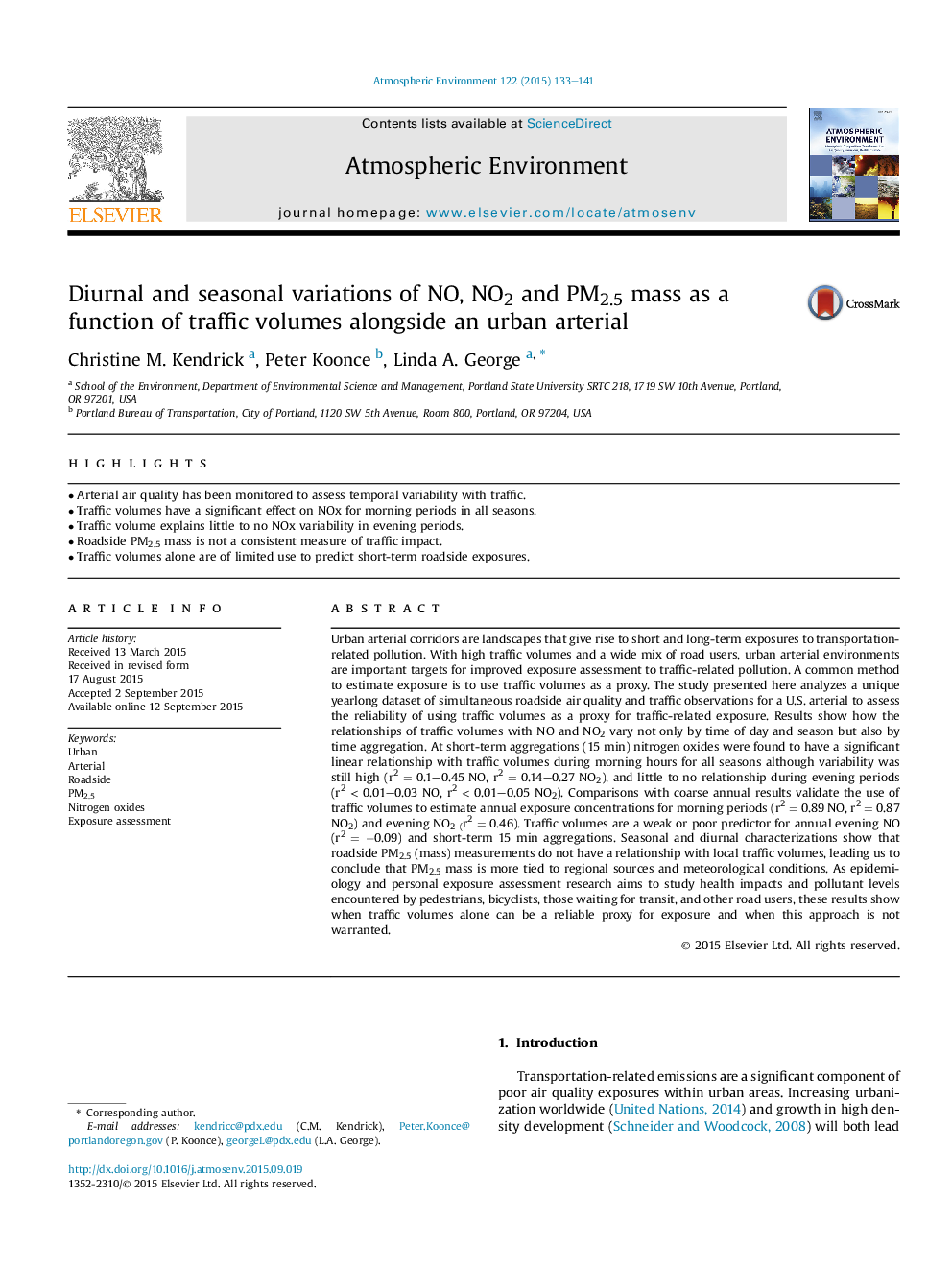| کد مقاله | کد نشریه | سال انتشار | مقاله انگلیسی | نسخه تمام متن |
|---|---|---|---|---|
| 6336964 | 1620349 | 2015 | 9 صفحه PDF | دانلود رایگان |

- Arterial air quality has been monitored to assess temporal variability with traffic.
- Traffic volumes have a significant effect on NOx for morning periods in all seasons.
- Traffic volume explains little to no NOx variability in evening periods.
- Roadside PM2.5 mass is not a consistent measure of traffic impact.
- Traffic volumes alone are of limited use to predict short-term roadside exposures.
Urban arterial corridors are landscapes that give rise to short and long-term exposures to transportation-related pollution. With high traffic volumes and a wide mix of road users, urban arterial environments are important targets for improved exposure assessment to traffic-related pollution. A common method to estimate exposure is to use traffic volumes as a proxy. The study presented here analyzes a unique yearlong dataset of simultaneous roadside air quality and traffic observations for a U.S. arterial to assess the reliability of using traffic volumes as a proxy for traffic-related exposure. Results show how the relationships of traffic volumes with NO and NO2 vary not only by time of day and season but also by time aggregation. At short-term aggregations (15Â min) nitrogen oxides were found to have a significant linear relationship with traffic volumes during morning hours for all seasons although variability was still high (r2Â =Â 0.1-0.45 NO, r2Â =Â 0.14-0.27 NO2), and little to no relationship during evening periods (r2Â <Â 0.01-0.03 NO, r2Â <Â 0.01-0.05 NO2). Comparisons with coarse annual results validate the use of traffic volumes to estimate annual exposure concentrations for morning periods (r2Â =Â 0.89 NO, r2Â =Â 0.87 NO2) and evening NO2 (r2Â =Â 0.46). Traffic volumes are a weak or poor predictor for annual evening NO (r2Â =Â â0.09) and short-term 15Â min aggregations. Seasonal and diurnal characterizations show that roadside PM2.5 (mass) measurements do not have a relationship with local traffic volumes, leading us to conclude that PM2.5 mass is more tied to regional sources and meteorological conditions. As epidemiology and personal exposure assessment research aims to study health impacts and pollutant levels encountered by pedestrians, bicyclists, those waiting for transit, and other road users, these results show when traffic volumes alone can be a reliable proxy for exposure and when this approach is not warranted.
Journal: Atmospheric Environment - Volume 122, December 2015, Pages 133-141